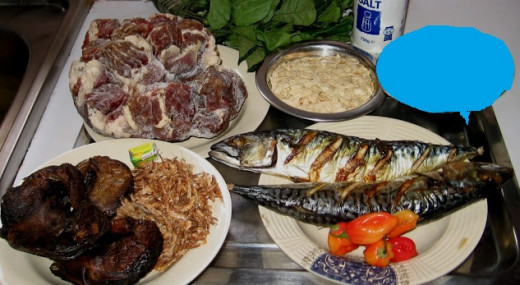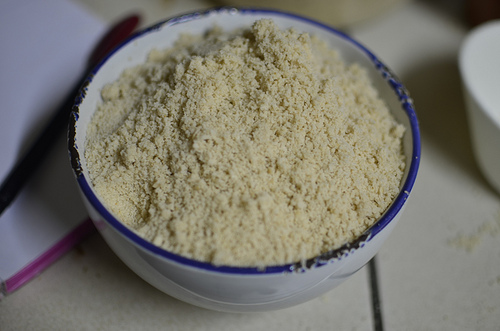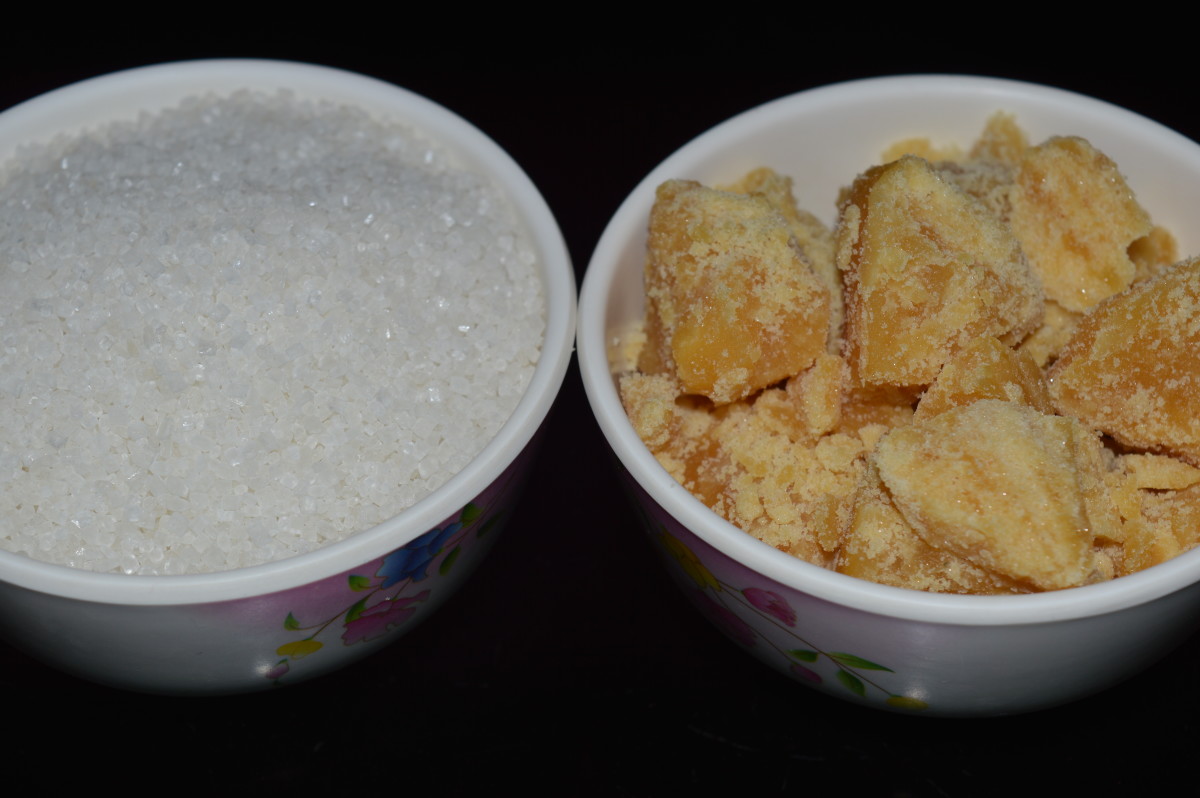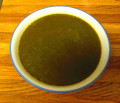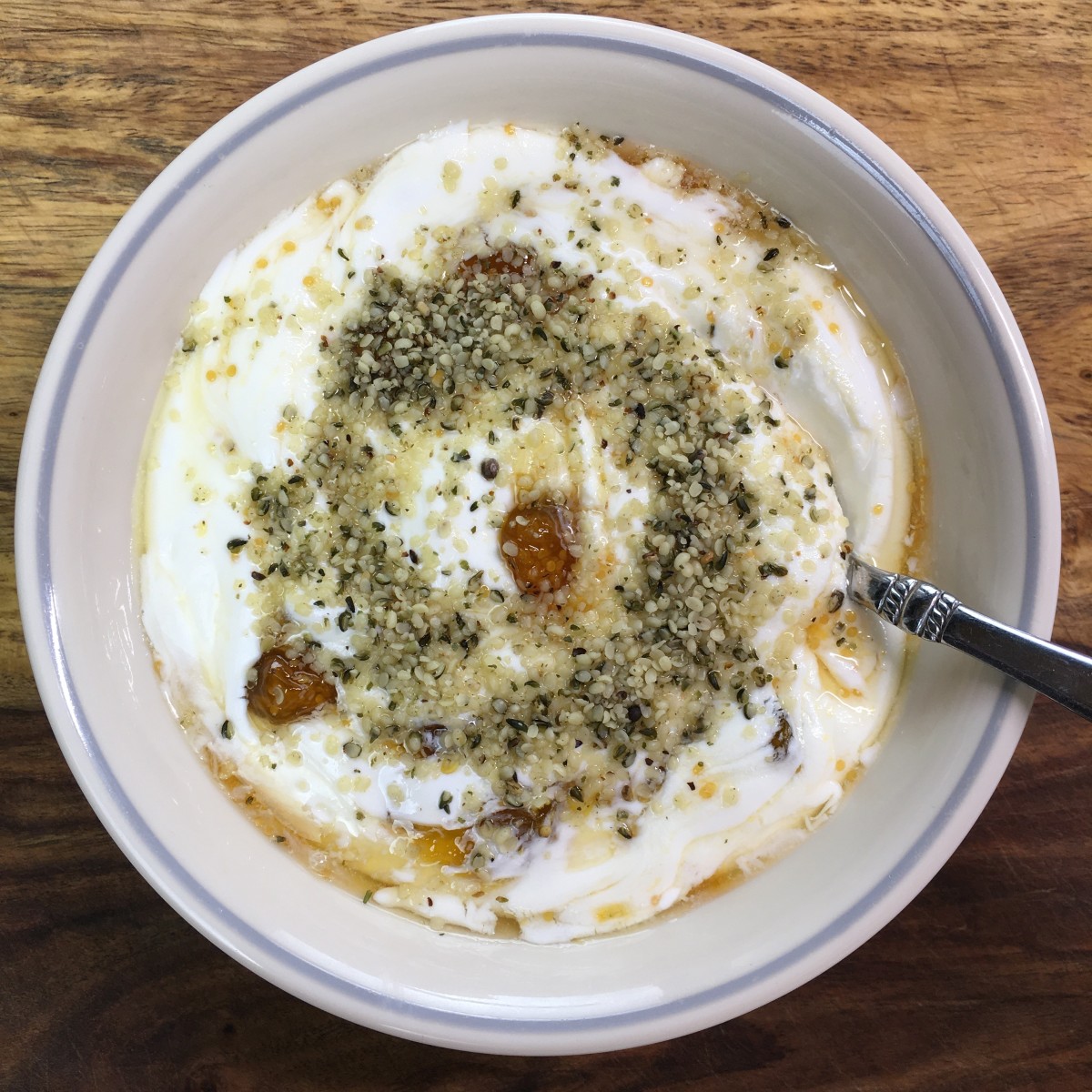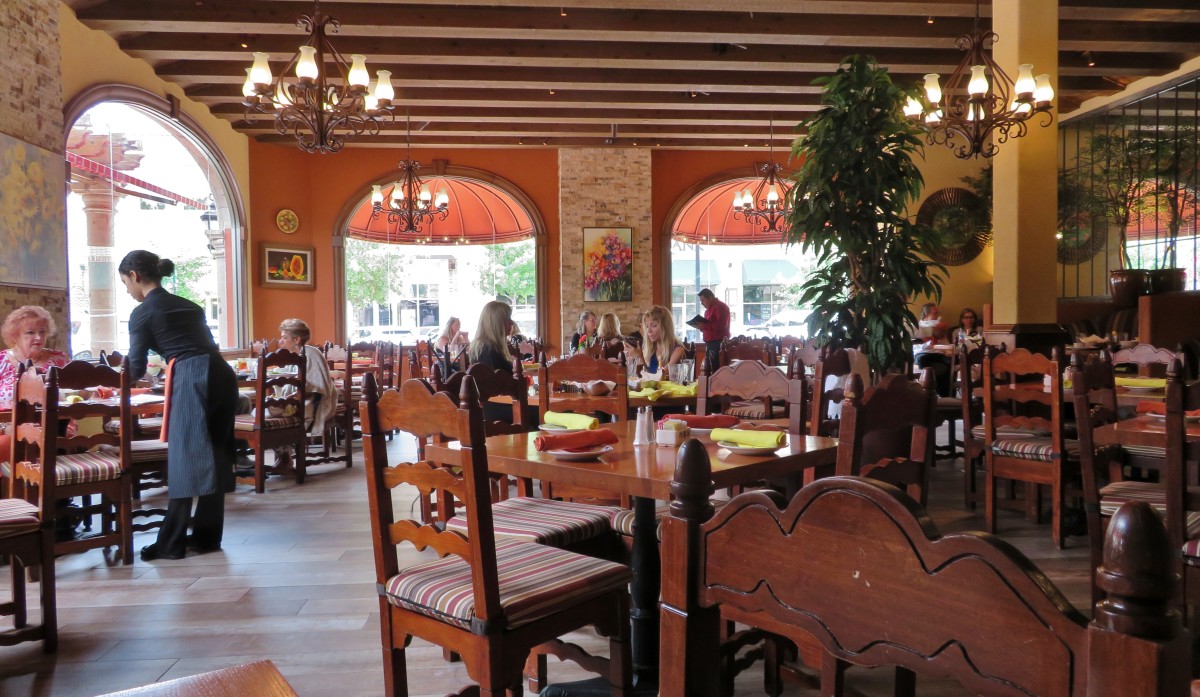How to Make a Spicy Egusi Soup and Eba
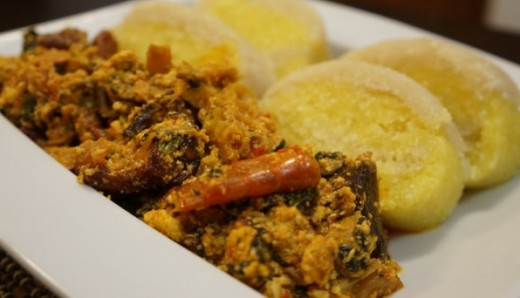
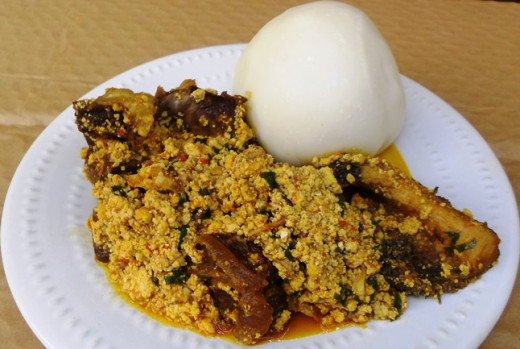
Introduction
Africa especially in the west is the home of local delicacy which is usually made from vegetables and leafy fruits commonly found in countries like Nigeria, Ghana, Benin, Togo, Liberia and others. Most local African dishes are soups which are eaten with pastry (or ‘swallows’ as it is usually called) made from pounded yam, cassava or cocoa yam.
But the soup I will be discussing which is the Egusi Soup is made from the fruited pumpkin vegetable leaves usually called 'ugu' and can be predominantly found in Eastern and Western part of Nigeria.
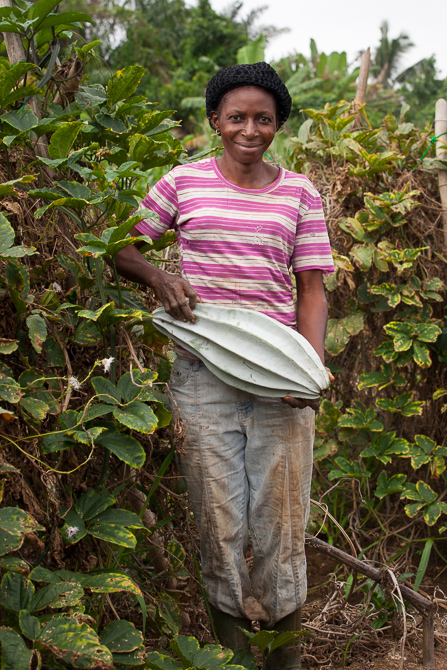
This Egusi soup originated from the eastern part of Nigeria, West Africa which has over 250 different ethnic groups with about 300 spoken tradition languages thus making it the most popular and commonly eaten soup. It is a tradition in Africa especially in Nigeria where I come from that a woman must know how to make a pot of soup (at least three different types) because we ironically believe that a woman’s place is only the kitchen. Therefore, making a soup is no big deal but making thick, spicy and tasty to the satisfaction of a typical African man is where some young women are found wanting
So for the purpose and the good of any lady (white or black) who wishes to marry an African man, I had to consult an expert in soup making to write down a detailed recipe of how to prepare a thick and spicy Egusi soup served with Eba.
Let us first discuss the meaning and how to prepare this Egusi and Eba.
Egusi: A local name for a fruit called melon and it is that large round fruit usually with a yellow or green skin which grows on climbing plants (Remember this is different from the common Watermelon we use to know…okay?) and has a tiny white seed covered with yellow scales which is dried and peeled off.
Eba: A local name for a dried, grinded, mashed and fried cassava called garri, which has been turned into a pastry by mixing with boiled water.
Photo
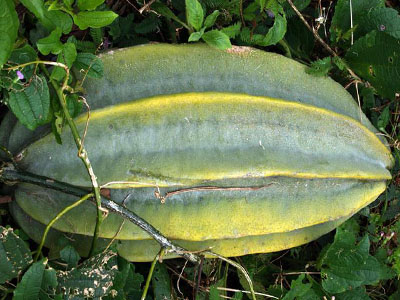
Rate this
Cook Time
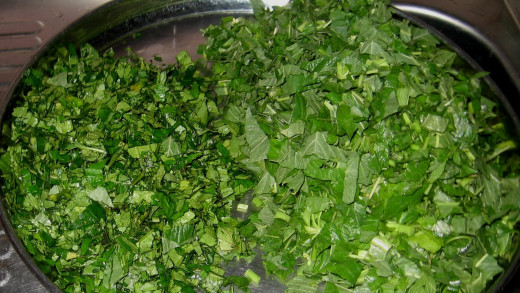
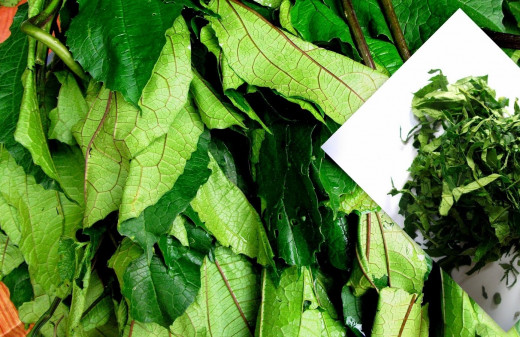
Ingredients
- 2-3 Liters Water
- 3(1/2) cups Egusi seeds
- 1 cup Grinded Crayfish, spice
- 1 teaspoon Salt, for taste
- 20cl Red Palm oil, for red colouration
- 1 kilo Meat (Turkey or fish), spice
- 2 pieces each Stockfish and dry-fish, for protein
- 2 pieces of Maggi or Knorr cubes
- 2 teaspoons of grinded pepper, for spicy taste
- 2 pieces Onions, for spice
- 500 grams fresh fruited pumpkin vegetable leaves (or bitterleaf ), for fibre
- Half cup achi seeds, for thickening


Photo
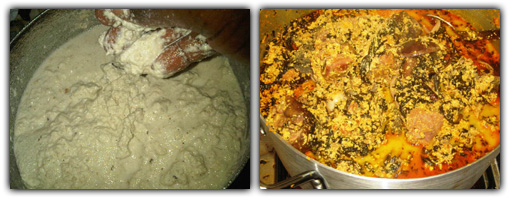
INSTRUCTIONS
- First Stage: Wash the fruited pumpkin vegetable leaves (or bitterleaf locally called ‘Onugbu’) properly well with water and salt or boil for ten minutes to remove bitter taste in case one decides to use bitter leaf; (pictured above) Parboil the meat (fish or turkey) with some spicy ingredients (like thyme, little onions and pepper) added to it for ten minutes, this will help to improve the taste and softens the meat. Using hot water, soak the stockfish and the dryfish into the bowl of water to remove dirts, sands and softens it. Then place it aside
- Measure three and half cups of dried Egusi (melon) seed, grind with a hand grinding machine and keep aside in a plate
- Pour in small quantity (2 liters) of water into a cooking pot and allow it to boil;
- Pour in the grinded Egusi seeds into the same pot and allow it to cook for 10 to 15 minutes before stirring; (NB: The other method of preparing Egusi involves heating the red oil and not allowing to bleach before adding the mashed Egusi, but most people make mistakes at this juncture and some other people hate or allergic to fried food).
- Stir the soup occasionally with a soup ladle for proper mixing until it becomes thick and forms a crumb (as pictured above).
- Add another little quantity of water and allow it to boil for about five minutes before adding the 20cl of red palm oil and continue to stir to avoid burning.
- Take the parboiled meat, fish or turkey and together with the soaked stock-fish and dryfish and pour it into the pot of cooking soup and allow boiling for ten to fifteen minutes,
- Then it is now time to add the already washed and sliced fruited pumpkin vegetables allowing it to boil for just five minutes, then simmer for ten minutes but don’t forget to taste for salt and pepper. Ho la la! Our delicious and of course palatable pot of spicy Egusi soup is ready.
- For Eba :Measure and pour the amount of water needed into a kettle or another pot and allow it to boil;
- Then transfer the hot water into a clean bowl and fetch the needed quantity of powdered garri. Gradually pour the garri into the hot water until it covers the bowl and swollen. Cover the bowl for about ten minutes and stir the content
- OR Transfer the hot water into a mortar, fetch the needed quantity of the powdered garri and pour gradually into it.
- Allow for about five minutes and pound using the pestle till the pastry is soft; your Eba is now ready.
Video on how to make Egusi soup
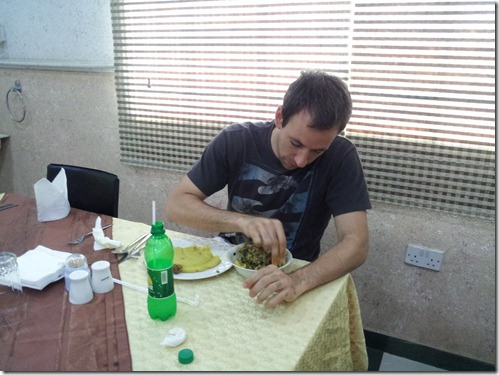
Vote now
Would you love to taste this spicy Egusi soup ?
| Nutrition Facts | |
|---|---|
| Serving size: 325.1g | |
| Calories | 464 |
| Calories from Fat | 162 |
| % Daily Value * | |
| Fat 18 g | 28% |
| Saturated fat 3 g | 15% |
| Unsaturated fat 0 g | |
| Carbohydrates 12 g | 4% |
| Sugar 3 g | |
| Fiber 3 g | 12% |
| Protein 45 g | 90% |
| Cholesterol 93 mg | 31% |
| Sodium 1815 mg | 76% |
| * The Percent Daily Values are based on a 2,000 calorie diet, so your values may change depending on your calorie needs. The values here may not be 100% accurate because the recipes have not been professionally evaluated nor have they been evaluated by the U.S. FDA. | |
Health Benefits of Egusi Soup
Egusi soup is widely regarded as part of the culture of a particular tribe in Nigeria called the Ibos, who are predominantly found in the Southeastern part of Nigeria.
The soup has very extensive health benefits especially when Bitter leaf is used as a vegetable in replacement for the commonly used Ugu leaves.
Some of the health benefits are as follow;
1) Bitter leaf as a vegetable is a very good source of vitamins, minerals, and other nutrients, such as antioxidants and fiber that plays a vital role in the body, including the maintenance of bones and teeth.
2) With empirical evidences from various research consistently shows that people who eat at least five servings of vegetables a day have the lowest risk of many diseases, including cancer and heart disease.
3) The Egusi seed are (very different and should never be mistaken for pumpkin or watermelon seeds) very rich and a very good source of protein.
4) The Egusi seeds are also high in vitamins B1 and B2, that are both important for growth and the production of red blood cells.
5) Achi seed is a good source of immune booster which was used in traditional medicine to treat common respiratory diseases such as catarrh, colds and coughs
This content is accurate and true to the best of the author’s knowledge and is not meant to substitute for formal and individualized advice from a qualified professional.
© 2015 Factable News

